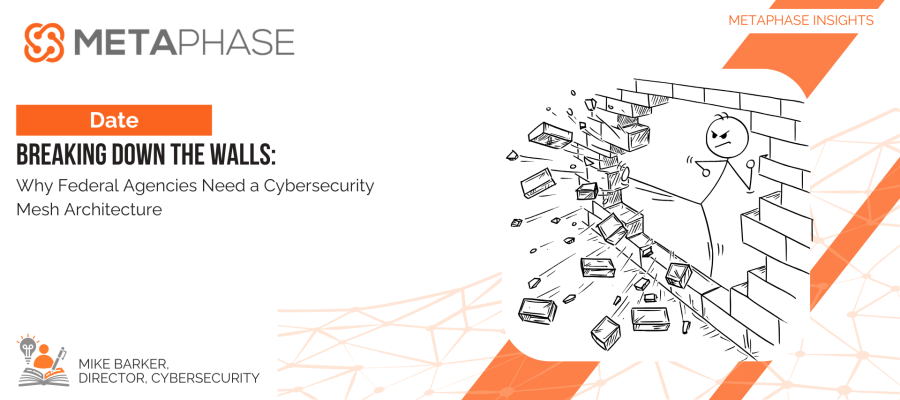
What if your cybersecurity strategy wasn’t a fortress, but a dynamic mesh that defends every edge, everywhere?
Cybersecurity Mesh Architecture (CSMA) is transforming how federal agencies protect distributed systems in a hybrid, zero trust world.
For decades, federal cybersecurity operated on a “castle and moat” model, defend the perimeter, and everything inside is safe. But today’s IT environments no longer have clear perimeters. Applications live in the cloud, users connect from everywhere, and data flows across multiple platforms. As this complexity grows, so do the vulnerabilities.
Enter Cybersecurity Mesh Architecture (CSMA), a modern security paradigm that decentralizes protection and extends security controls to every digital asset, no matter where it resides. Rather than relying on a single control point, CSMA creates an adaptive, integrated fabric of security tools that work together across identities, endpoints, applications, and networks.
At its core, CSMA prioritizes interoperability. It allows agencies to integrate multiple, diverse security solutions, such as identity providers, SIEM tools, and endpoint protection, into a cohesive system. These tools communicate in real time, share threat intelligence, and coordinate enforcement policies based on context, not just location.
This architecture supports critical Zero Trust principles: never trust, always verify, and assume breach. For example, under CSMA, a user logging in from an unrecognized device with unusual behavior might trigger dynamic access restrictions, regardless of whether the login occurs inside or outside the agency’s network. The system isn’t relying on perimeter status, it’s using real-time telemetry and trust scores to make decisions.
Agencies like the Department of Veterans Affairs (VA) and the Department of Energy (DOE) are exploring mesh architectures to improve resilience and reduce complexity in hybrid environments. By moving away from rigid, siloed controls and toward a composable, policy-driven mesh, they can secure workloads across cloud and on-premise infrastructure with greater agility.
Implementing CSMA requires more than just new tools, it demands a shift in strategy. Agencies must prioritize standards-based interoperability, implement centralized policy orchestration, and ensure continuous visibility across all domains. This also involves a strong identity fabric, contextual access control, and automated threat response across a distributed security mesh.
MetaPhase supports this shift with OrangeArmor and Mpower, our DevSecOps and intelligence integration platforms, enabling agencies to build mesh-aligned environments that protect everywhere from the edge to the core. We help agencies unify policy enforcement, threat visibility, and risk analytics under a single, dynamic security fabric.
MetaPhase’s Role:
MetaPhase empowers federal agencies to transition to Cybersecurity Mesh Architectures using integrated DevSecOps pipelines and dynamic security policy orchestration. With OrangeArmor and Mpower, we make mesh-enabled cybersecurity a practical, scalable reality.

